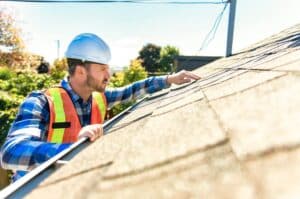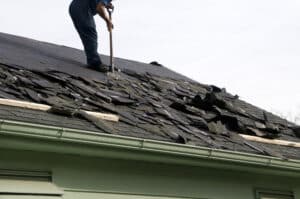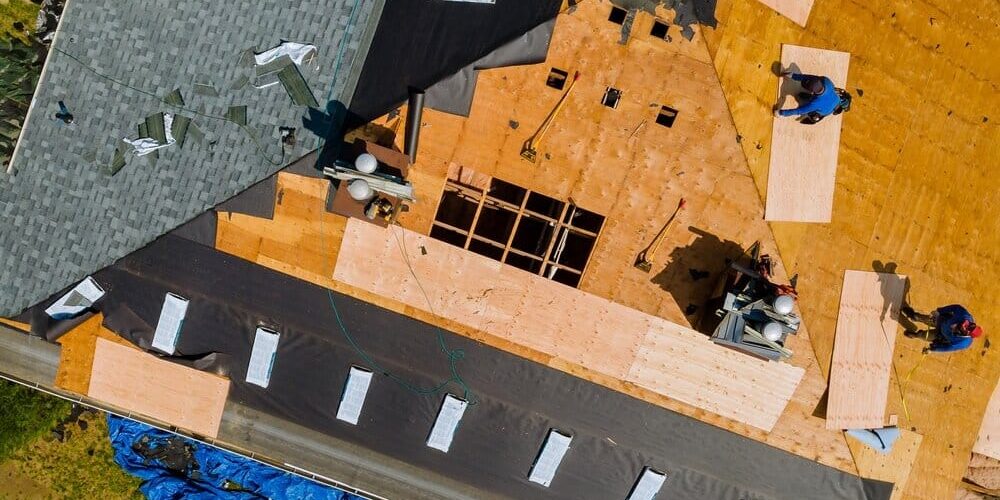Replacing a roof is a significant investment for any homeowner. Whether your roof has reached the end of its lifespan or has been damaged by severe weather, understanding the roof replacement process can help you make informed decisions and ensure a successful outcome.
In this blog post, we will guide you through the essential steps involved in roof replacement, with insights from Godfrey Roofing, a trusted roofing contractor in Ottawa since 1984.
Initial Assessment and Inspection For Roof Replacement
The first step in roof replacement is thoroughly assessing and inspecting your existing roof. A professional roofing contractor, such as Godfrey Roofing, will examine the condition of your roof, identify any underlying issues, and determine if a replacement is necessary.
A professional roofing contractor, such as Godfrey Roofing, will examine the condition of your roof, identify any underlying issues, and determine if a replacement is necessary.
This assessment will include examining the shingles, checking for leaks, assessing the structural integrity, and inspecting the flashing and ventilation systems.
The initial assessment also involves evaluating the overall condition of your home, including the attic. Inspecting the attic allows the roofing contractor to check for signs of water damage, mould, or inadequate insulation, which can impact the new roof’s performance.
Identifying and addressing these issues before the roof replacement ensures a proper and long-lasting installation.
Choosing the Right Roofing Material
Once it is determined that a roof replacement is needed, the next step is to decide on the right roofing material for your home. There are various options available, each with its benefits and considerations.
The most common roofing material is asphalt shingles, which are durable, cost-effective, and available in multiple styles and colours. Other options include metal roofs, cedar shakes, slate, and tile.
Factors such as durability, aesthetics, energy efficiency, and budget will influence your choice. A professional roofing contractor can provide guidance and recommendations based on your needs and preferences.
They will consider factors such as local climate, architectural style, and homeowner association requirements to help you make an informed decision.
Obtaining Permits and Scheduling
Before the roof replacement project can begin, obtaining any necessary permits from the local building authority is essential. These permits ensure that the replacement adheres to local building codes and regulations. Your roofing contractor will assist you in navigating the permit requirements and ensuring compliance.
Once the permits are in place, A schedule will be established for the roof replacement project, considering factors like weather conditions and availability of materials.
It is crucial to plan the project during favourable weather to avoid potential delays and ensure the safety of the roofing team.
Preparing the Site For Roof Replacement
On the day of the roof replacement, the roofing team will arrive and begin preparing the site. This involves setting up safety measures, such as installing barriers and warning signs, to ensure the safety of everyone involved.
They will also cover the surrounding landscaping and protect your property from any potential damage during the roof replacement process.
This is also a good time to make necessary parking arrangements, as roofing trucks and equipment must be nearby for efficient project execution.
It is important to communicate with your neighbours about the upcoming roof replacement to minimize any inconvenience caused during the project.
Removing the Old Roof
The next step in the roof replacement process is the removal of the old roof. The roofing team will carefully strip off the existing shingles, flashing, and other roofing materials down to the decking. This step is crucial as it provides a clean and solid foundation for the new roof installation.
provides a clean and solid foundation for the new roof installation.
During removal, it is common to find underlying issues such as decayed or damaged decking. The roofing team will inspect the decking for any signs of damage or rot.
If problems are found, the damaged decking will be repaired or replaced to ensure a sturdy and secure base for the new roofing system.
Addressing Ventilation and Insulation
Proper ventilation and insulation are essential for your new roof’s long-term performance and energy efficiency. The roofing team will assess the current ventilation system and make any necessary adjustments or improvements.
This may include adding or replacing vents, ridge vents, or soffit vents to ensure the proper flow of air through the attic space.
Inadequate insulation can lead to energy loss, temperature fluctuations, and potential damage to the roof. The roofing team will ensure that the attic space is properly insulated to meet the recommended insulation standards for your climate zone. This will help maintain a consistent temperature, reduce energy consumption, and protect the roof from thermal stress.
Installing the New Roof
With the old roof removed, the decking inspected and repaired, and the ventilation and insulation addressed, it’s time to install the new roof. This involves laying down the new underlayment, applying the chosen roofing material, and properly securing the shingles or roofing panels. Flashing will be installed to ensure watertightness around chimneys, vents, and other roof protrusions.
The precise installation process will vary depending on the roofing material chosen. Asphalt shingles, for example, are installed in overlapping layers, while metal roofs require proper fastening and sealing techniques. Your roofing contractor will follow industry best practices and manufacturer guidelines to ensure a reliable and long-lasting installation.
Final Inspection and Cleanup
Once the new roof is installed, a final inspection will ensure everything meets the required standards and specifications. This inspection includes checking the alignment of shingles, verifying proper ventilation, and examining the overall quality of the installation. Any necessary adjustments or touch-ups will be made before finalizing the project.
Finally, the roofing team will clean up the site, removing debris and thoroughly cleaning the surrounding area. This includes using magnets or rakes to collect loose nails or metal pieces that may have fallen during the roof replacement.
The goal is to leave your property in a condition that is as clean and tidy as possible.
Conclusion
Understanding the roof replacement process is crucial for homeowners considering a roof replacement project.
By working with a reputable and experienced roofing contractor like Godfrey Roofing, you can ensure the process is smooth and efficient. Also, it delivers a high-quality and long-lasting roof for your home.
If you have any questions or want to schedule a roof replacement consultation, contact Godfrey Roofing.








